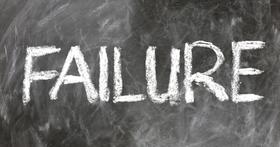Top Rankings
Ume Preparatory Academy School District ranks among the top 20% of public school district in Texas for:
Category
Attribute
Overall Rank
Highest overall rank (Top 20%)
Reading/Language Arts Proficiency
Highest reading/language arts proficiency (Top 20%)
Science Proficiency
Highest science proficiency (Top 20%)
Diversity
Most diverse schools (Top 1%)
For the 2025-26 school year, there are 3 public elementary schools serving 985 students in Ume Preparatory Academy School District. This district's average elementary testing ranking is 8/10, which is in the top 30% of public elementary schools in Texas.
Public Elementary Schools in Ume Preparatory Academy School District have an average math proficiency score of 47% (versus the Texas public elementary school average of 45%), and reading proficiency score of 67% (versus the 52% statewide average).
Minority enrollment is 72% of the student body (majority Hispanic), which is less than the Texas public elementary school average of 75% (majority Hispanic).
Overview
This School District
This State (TX)
# Schools
4 Schools
6,890 Schools
# Students
1,567 Students
3,732,750 Students
# Teachers
93 Teachers
255,119 Teachers
Student-Teacher Ratio
17:1
17:1
Student By Grade
District Rank
Ume Preparatory Academy School District, which is ranked #233 of all 1,196 school districts in Texas (based off of combined math and reading proficiency testing data) for the 2022-2023 school year.
The school district's graduation rate of 95% has increased from 90% over five school years.
Overall District Rank
#227 out of 1202 school districts
(Top 20%)
(Top 20%)
Math Test Scores (% Proficient)
49%
44%
Reading/Language Arts Test Scores (% Proficient)
67%
51%
Science Test Scores (% Proficient)
64%
46%
Graduation Rate
(21-22)≥95%
90%
Students by Ethnicity:
Diversity Score
0.64
0.64
% American Indian
n/a
n/a
% Asian
2%
6%
% Hispanic
53%
53%
% Black
13%
13%
% White
28%
25%
% Hawaiian
n/a
n/a
% Two or more races
4%
3%
All Ethnic Groups
District Revenue and Spending
The revenue/student of $8,546 in this school district is less than the state median of $13,398. The school district revenue/student has declined by 18% over four school years.
The school district's spending/student of $6,094 is less than the state median of $14,129. The school district spending/student has declined by 18% over four school years.
Total Revenue
$13 MM
$74,029 MM
Spending
$10 MM
$78,063 MM
Revenue / Student
$8,546
$13,398
Spending / Student
$6,094
$14,129
Best Ume Preparatory Academy School District Public Elementary Schools (2025-26)
School
(Math and Reading Proficiency)
(Math and Reading Proficiency)
Location
Quick Facts
Rank: #11.
Ume Mansfield Elementary School
Charter School
(Math: 60-64% | Reading: ≥80%)
Rank:
Rank:
10/
Top 10%10
2351 Country Club Dr
Mansfield, TX 76063
(214) 445-6243
Mansfield, TX 76063
(214) 445-6243
Gr: K-6 | 191 students Student-teacher ratio: 14:1 Minority enrollment: 59%
Rank: #22.
Ume Preparatory Academy
Charter School
(Math: 49% | Reading: 67%)
Rank:
Rank:
8/
Top 30%10
3838 Spur 408
Dallas, TX 75236
(214) 445-6243
Dallas, TX 75236
(214) 445-6243
Gr: K-6 | 541 students Student-teacher ratio: 18:1 Minority enrollment: 77%
Rank: #33.
Ume Preparatory Academy - Duncanville
Charter School
(Math: 30-34% | Reading: 60-64%)
Rank:
Rank:
6/
Top 50%10
415 N Cedar Ridge Dr
Duncanville, TX 75116
(972) 296-0084
Duncanville, TX 75116
(972) 296-0084
Gr: K-6 | 253 students Student-teacher ratio: 16:1 Minority enrollment: 71%
Recent Articles

Charter Schools vs Public Schools 2025: Key Differences & Trends
Explore updated 2025 insights comparing charter schools vs public schools, enrollment, academic outcomes, funding, and real-world examples for families and educators.

Are Public Schools Ready for the 21st Century? 2025 Update
Explore 2025 insights on whether public schools are ready for the 21st century, covering performance, technology, equity, funding, and future-ready learning.

Public School Open House & Enrollment Season Guide
A parent-focused guide to the public school open house and enrollment season, with expert questions, timelines, and decision tips.





